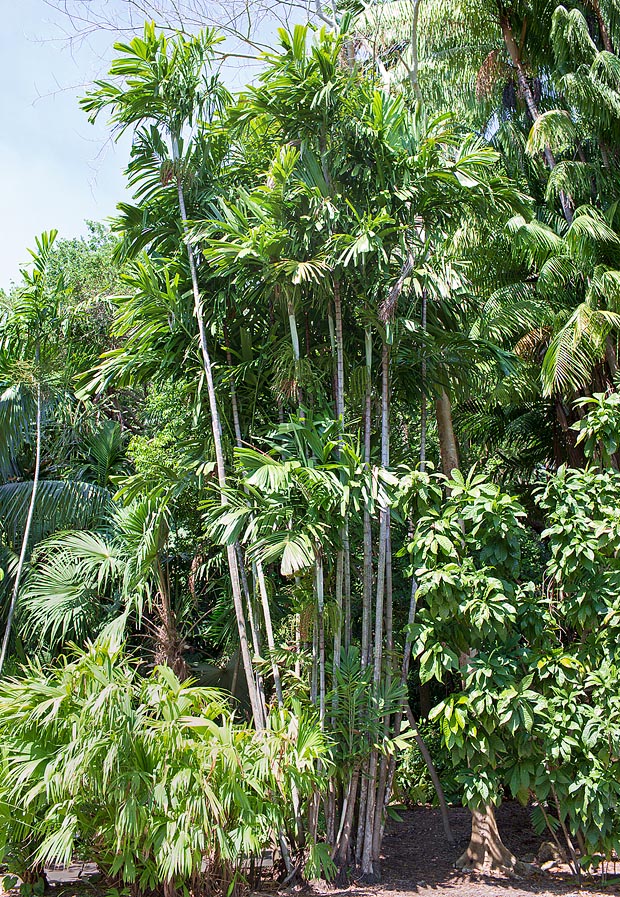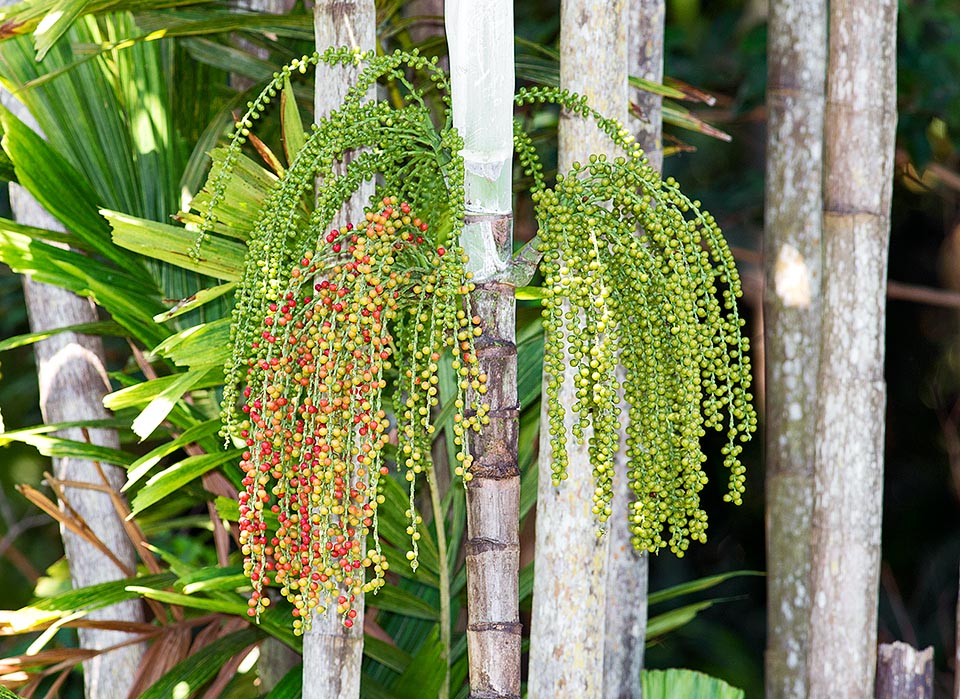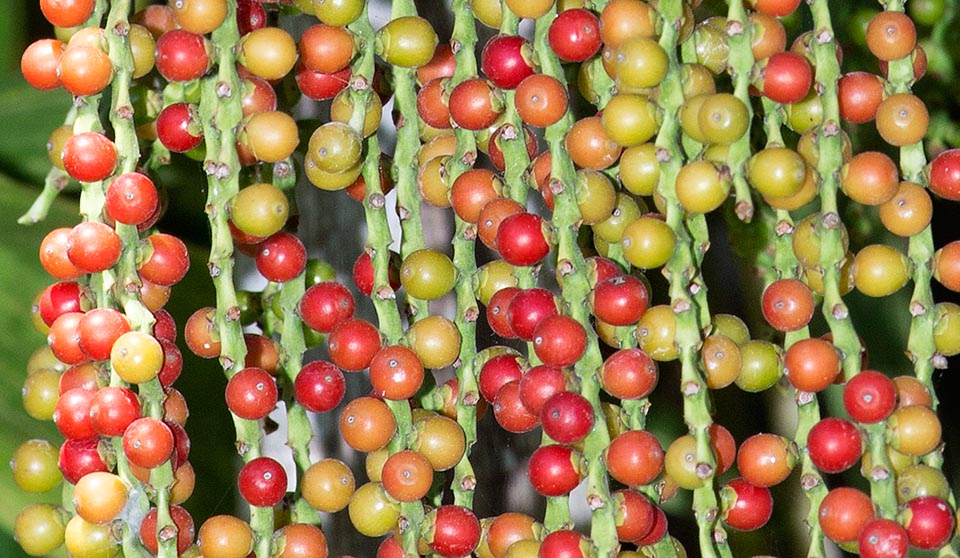Family : Arecaceae

Text © Pietro Puccio

English translation by Mario Beltramini

The Hydriastele rostrata is native to the swampy rain forests of New Guinea © Giuseppe Mazza
The name of the genus is the combination of the Greek substantives “ὕδωρ” (hydor) = water and “στήλη” (stéle) = slab vertically infixed into the soil, with possible reference to the swampy environment where do live some species belonging to the genus; the name of the species is the Latin adjective “rostratus, a, um” = beaked, provided with rostrum, with reference to the shape of the fruit.
The Hydriastele rostrata Burret (1937) is an unarmed monoecious species forming dense tufts with erect stems, up to about 6 m tall with a diameter of 6-7,5 cm, on which are visible the annular traces of the junction of the fallen leaves.
The leaves, on a 30-40 cm long petiole, are pinnate, 1-1,4 m long, with leaflets of variable length and shape, from linear to cuneiform with obliquely truncated and toothed apex, irregularly arranged in groups on the rachis, of intense green colour.
The foliar base, tubular, of green colour, wraps entirely the stem per a length of about 90 cm.
The inflorescences, initially enclosed in two deciduous bracts, generate under the leaves (infrafoliar) on short peduncle, are ramified, with cream white flowers arranged in the characteristic triad (one female flower between two male).
The fruits, containing one single seed, are globose of initially green colour, then glossy intense red when ripe.
It reproduces by division and by seed, previously immersed in water for 2 days, in organic draining loam maintained constantly humid at the temperature of 24-26 °C.
Of undoubtful ornamental characteristics, but little known in cultivation, to utilize exclusively in the humid tropical and marginally subtropical climate region, not standing temperatures close to 0 °C.

It forms dense tufts with erect stems, up to about 6 m tall with a diameter of 6-7,5 cm, on which are visible the annular traces of fallen leaves. Showy inflorescences © Giuseppe Mazza

The numerous fruits, containing a single seed, are globose of initially green colour, then glossy intense red colour when ripe © Giuseppe Mazza
→ For general notions about ARECACEAE please click here.
